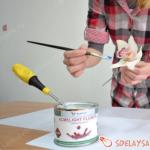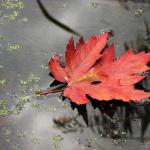How to dry herbarium leaves
Autumn is the most beautiful time of the year with golden foliage, clear blue skies, incredible landscapes of autumn flowers and trees. So I want to keep a piece of this beauty at home so that it will please the eye on long winter evenings. To do this, you can dry the leaves, flowers, then use them for herbarium or make up various compositions from them.
It is in autumn that it is best to collect flowers, spikelets and leaves for various compositions. Dried plants can be useful for your children - schoolchildren for herbarium.

Walking through the autumn park, through the forest, collect the leaves you like for the herbarium, the most different in shape and color - orange, red, yellow, green. It is advisable to collect plants in special herbarium folders.
All collected flowers and leaves can be dried in an old thick book, which is not a pity. But if you do not want to spoil the pages, you can cover the samples on both sides with napkins, a notebook sheet or white paper.
![]()
The collected leaves can be dried in the newspaper. Take a pack of newspapers, lay out the plants on one half, cover with the other. Place the next pack of newspapers on top and lay out the following plants. Press down the entire stack with heavy books.
The production of dried flowers by air drying is increasingly used. The grasses, flowers or spikelets you like are collected in small bunches, hung with flowers down in a dark place. This method allows you to maintain the natural shape of the plant.

Let's assume. you urgently need material for a herbarium. Dry the leaves with an iron. Put them between napkins or newspapers, iron several times with a non-hot iron. Iron it again after a few hours. Repeat until completely dry. It should be noted that plants dried in this way are more fragile and brittle, and require more careful handling.
Flowers (eg roses) are dried in the sand. Pour sand on paper, lay out flowers, spread the petals, and press lightly

To obtain a voluminous herbarium (for example, roses) at home, you will need a deep container (you can use a shoe box) and fine sand (also suitable for cat litter). Pour sand on the bottom of the box, put the rose you like and gradually fill it up, filling it well between the petals. And so, until the rose closes completely. It will dry out in 1-2 weeks. Dried in this way, the rose retains its natural shape and color as much as possible
Samples are best collected in dry weather. Herbarium flowers and leaves collected after the rain may become moldy or lose the brightness of the colors during drying.




